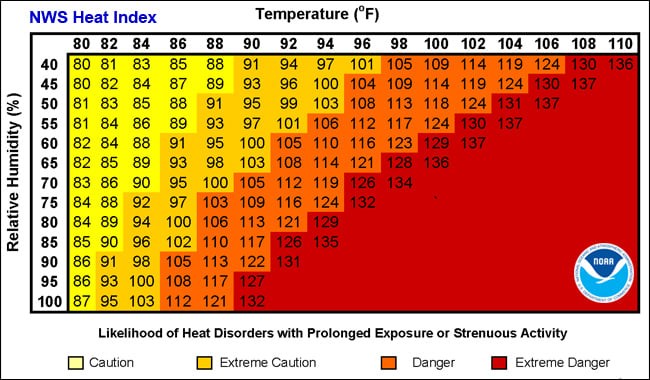
Summers in Central Texas are hot. But factor in the humidity and the heat index, or "feels-like" temperature, often rises above 100 degrees Fahrenheit. In extreme heat and high humidity, evaporation is slowed and the body must work extra hard to maintain a normal temperature possibly causing a life-threatening situation.

Know the Terms
Heat Wave - Prolonged period of excessive heat.
Heat Cramps - First signal body is having difficulty in heat. Muscles will spasm and create pain. Move the victim to a cooler location, massage the muscle, sip cool water.
Heat Exhaustion - A mild shock where blood flow to the skin increases, causing blood flow to decrease to vital organs. If not treated, victim's condition will worsen possibly leading to heat stroke. Get victim to lie down in cool place and sip cool water. Loosen clothing and apply cool, wet cloths. Seek immediate medical attention is victim is vomiting.
Heat Stroke - A life-threatening condition. The body temperature can rise so high, resulting in brain damage or even death. Call 911 or get victim to hospital immediately. Cool body with a sponge bath or wet sheet to reduce body temperature.
During a Heat Emergency
- Stay out of sun as much as possible.
- Stay cool in home or in public buildings.
- Drink plenty of water.
- Limit alcohol and salt intake.
- Dress in loose, light-colored clothing, covering as much skin as possible.
- Wear a wide-brimmed hat.
- Utilize fans.
People & Pets
- Check in on family and friends.
- Use a buddy system when working in extreme heat.
- Never leave children or pets in hot vehicle.
Building Readiness
- Install temporary window reflectors such as foil or cardboard between windows and drapes.
- Weather strip doors and sills to keep cool air inside.
- Install window air conditions snuggly.
- Insulate air conditioning ducts well.
To Find Out More